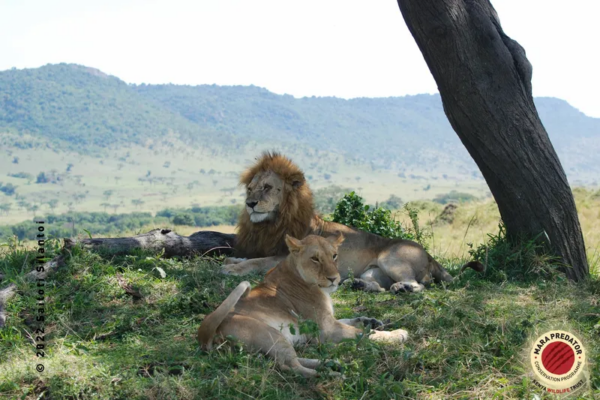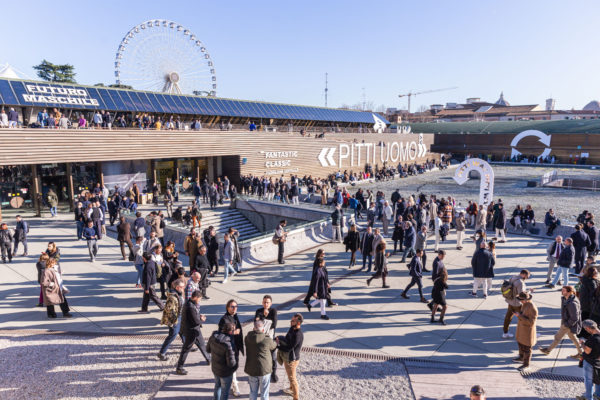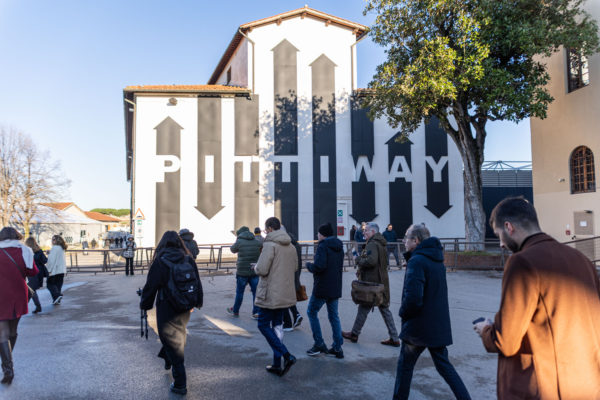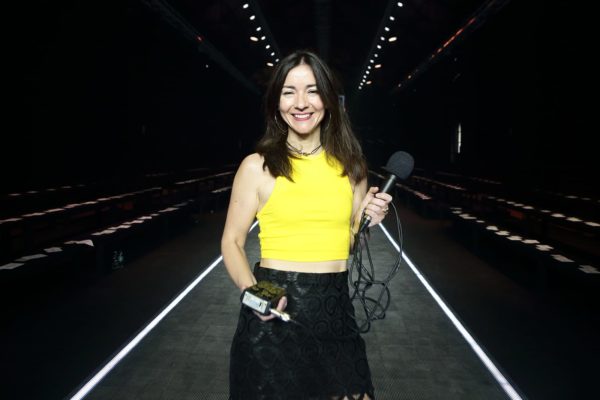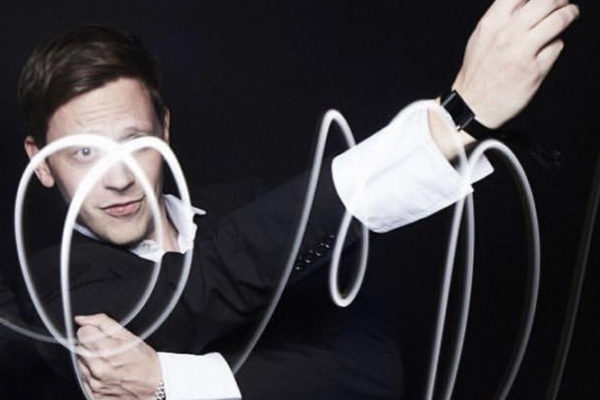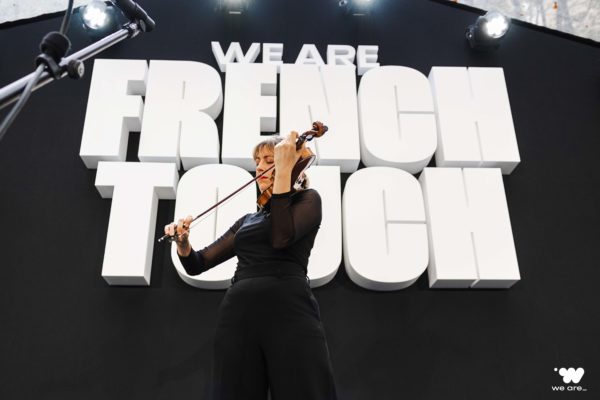GIUSI FERRÉ is a famous fashion Italian journalist who could be called the “Italian Anna Wintour”. She knew Armani, Ferré and Versace in their early days and lived through the birth of Italian fashion with them, as a fashion critic, as she liked to call herself, rather than just a journalist. She died in Milan in April 2022. Milanese and proud of it, she explains to us in this conversation how Italian ready-to-wear was born and what made the capital of fashion and design so successful. We met her in an elegant restaurant in Corso Venezia, at the end of the Ermanno Scervino show in Milan on a Fashion Week day. Read our fascinating conversation, transcribed in full in this article.
December, 2019 | Milan
By Delphine Souquet

Who is Giusi Ferré?
GIUSI FERRÉ is a famous fashion journalist from Milan who could be called the “Italian Anna Wintour”. She lived through the birth of Italian fashion alongside Armani and Versace, as a fashion critic, as she liked to call herself.
Giusi Ferré
I think we are at the beginning of a big change, as well as from the point of view of style.
Giusi Ferré
She started her career as a journalist in Epoca, a very important weekly of the Mondadori Group. She then moved to the newspaper L’Europeo and co-edited the magazine Amica. Since the 2000s she wrote for Il Corriere della Sera, for which she collaborated with the magazine Io Donna, in which she ran a fixed weekly column BUCCIA DI BANANA (literally banana peel), and also for Corriere Economia.
She was a fashion critic in numerous TV and radio programmes in Italy, and since 2010 she hosted four editions of Io Donna Buccia di banana, on Sky’s flagship fashion channel Lei Tv, together with a team of fashion columnists such as Italian journalist Matteo Osso. She was a member of the jury of the famous programme Italia’s Next Top Model. In 2012 she published her best-selling book “Buccia di banana: lo stile e l’eleganza dalla A alla Z!” with Rizzoli and a book about Armani in 2015 “Giorgio Armani – Il sesso radicale”. She was also curator of the Book-Exhibition “Lo Sguardo Italiano. Fotografie di moda dal 1951 a oggi” (Charta, 2005). Her texts have been published in numerous books and exhibition catalogues, including “Innatural” (Triennale di Milano, 2004) and “Gianni/Versace”: lo stilista dal cuore elegante (Utopia, 2010).
Giusi Ferré’s debut as a journalist and fashion critic
I had the chance to do a job that I really enjoyed
Giusi Ferré, Giornalist and Fashion critic
DELPHINE : Can you tell us how your career started?
no one wanted to deal with a subject that was considered trivial, such as fashion
Giusi Ferré : I had the chance to do a job that I enjoyed enormously, that of a journalist. In September 1979, I started working for one of the first photography magazines, which was very important at the time of the Mondadori Group: Epoca (it was in this newspaper that Hernest Hemingway’s “The Old Man and the Sea” was published for the first time in Italy in 1952, before receiving the Nobel Prize in 1954). As it was a very serious newspaper, no one wanted to deal with a subject that was considered trivial, such as fashion. And so I was asked, as the latest arrival at the paper, to take on the fortuitous task of covering fashion at a time when ready-to-wear was actually born in Italy. That was my first chance. I met Versace in December 1979. I remember that it all started one day when I was asked to choose two names that I thought could become important in the future. At the time I chose Versace and Ferré. It is clear that I am not related to the latter.
Giusi Ferré attends the birth of Italian fashion as a journalist
DELPHINE : Did you realise the importance of this period for Italian Fashion and the people you were lucky enough to know?
Giusi Ferré : At the time, there were two very distinct types of fashion journalists. Those who worked with the photographers and then the very few who did the interviews. And in the middle there was a big gap. That’s how I took my place, always with the desire not to lock myself into a single role. This was my second chance.
All this happened casually, one after the other, that’s a bit of my story. After the closure of the newspaper L’Europeo that I loved so much, I didn’t want to work for just one newspaper and I became a freelance journalist. I collaborated with Il Corriere della Sera for Io donna, which I liked very much. Proposals came in, without even asking for them, and I could respond favourably or not. That was the story of my career. Then there was a moment that was a turning point in my career when I started doing television. Because it gave me a whole new level of fame. I started in the early 2000s with programmes for Rai and then for Sky, always in the world of fashion, and always with a lot of autonomy and freedom of speech. For programmes like Italia’s Next top model with Stefania Stefanenko for 4 editions.
DELPHINE : In the fashion world, what term would you use to describe your role? A fashion expert? A fashion intellectual?
Giusi Ferré : I would retain the term Fashion critic, which also requires writing skills. Let’s say that at the time I was one of the few in Italy. Today I have many colleagues who are not afraid to do this job and are very successful.
DELPHINE : Can you define what a Fashion Critic is?
Giusi Ferré : A critic needs to compare his opinion with what he already knows, to have basic references. You should have an eye, a voice and a writing style. Obviously there are characters in fashion that I like more than others. You have to try to think without being dominated by your affinities, even if I think that having an opinion is essential. You have to support it without thinking you have the truth. I would like to write a book that has the freedom to express the fact that there can be horrible things in fashion, that not everything can be beautiful
DELPHINE : How would you define fashion? Today we talk about contamination between Art and Fashion? Can we say that Fashion is a minor Art? What relationship do you see as a fashion insider between the two?
Giusi Ferré : When ready-to-wear was born in Italy, in the 75s with Armani, it is clear that fashion was seen as something minor. I don’t think it’s a minor art. Let’s say that the difference with other typologies of Art is that Fashion has a periodicity, every six months it has to be renewed. But when it is done at a certain level, it is a real artistic expression. In the beginning it was far from being considered as such.
DELPHINE : Could you remind us of the historical development that led to the creation of Italian contemporary fashion?
it all started in Rome before moving to Florence and then to Milan
Giusi Ferré : You have to consider that it all started in Rome before moving to Florence and then to Milan. In Rome there were the Alta Moda shows, the Haute Couture. Then in the 50’s and 60’s, in the famous Sala Bianca of the Palazzo Pitti (literally the White Room of the Pitti Palace) where the first shows of a certain type of fashion took place, let’s say of something that was not Haute Couture, but not yet ready-to-wear. Already in the middle of the 60’s, some designers started to feel cramped in Florence and to do things in Milan. In the ’75s, the publishing house Condenast brought out a very interesting book called Milano Fashion, which you can’t find today, and which talked about the ten or so brands that had organised themselves in Milan to parade: there were Missoni, Cadette, Krizia, Lebole, the Turin textile group, some of which still exist and others which have disappeared. There was obviously a desire to do something.
I have always found it very courageous that designers in their studios have had the desire to create, giving birth to ready-to-wear, in such a climate…
Giusi Ferré
DELPHINE : In the 1970s, Milan was the scene of many demonstrations by the extreme right-wing movements. How do you explain the fact that it became the capital of fashion?
I think that what characterises and differentiates Italian fashion is the ready-to-wear.
Giusi Ferré : It’s true that there was a very difficult political climate in Milan, there were a lot of terrorist attacks here. I have always found it very courageous that designers in their studios had the desire to create, giving birth to ready-to-wear in such a climate. In the Corso Venezia district where we are today, just around the corner, Armani had his studio and in front of it passed all the extreme right-wing demonstrators of neo-fascist inspiration who were in the Piazza di San Babila. The first ready-to-wear designers were born during this difficult period: Armani first in 1976, then Versace and Ferré in 1978. They changed the history of clothing, let’s say they invented it for a public that didn’t exist yet, and they created a real production system that didn’t exist either, it’s the birth of a system that we call ready-to-wear. Before them there were, on the one hand, what we call the great tailors, such as Max Mara and Lebole, and on the other hand, Haute Couture. I was lucky enough to witness the birth of this ready-to-wear system. I think that what characterises and differentiates Italian fashion is the ready-to-wear.
Fashion journalist Giusi Ferré tells us about Italian design
fashion is a form of design
DELPHINE : Milan is also the capital of Design with the very important Salone del Mobile at the beginning of April each year. What is the relationship between fashion and design in Milan?
Giusi Ferré : Milan is design, so it’s easy to understand why ready-to-wear was born here, and in my opinion they have a lot in common, fashion is a form of design. There are a lot of architects in fashion, they are not always proud to admit it, for example Ferré was an architect. The Milan Design Fair is very important and always has been. Strangely enough, design companies are very small, and so are their billings, except for a few big names like Poliform, but they are very valuable in their ability to export to the world. Design has also been very much inspired by fashion’s modes of communication and fashion has a great capacity to create links with other fields such as art, cinema, music.
I am very proud to be Milanese
DELPHINE : Made in Italy” is a very open concept that is not limited to Italian designers, but also extends to foreign designers who choose Italian production for its excellence. At the Fashion Hub in Milan during Fashion Week, Chinese and Hungarian designers invited by the CNMI are exhibiting, and not all of them produce in Italy. What can you tell us about this opening up of Italian fashion?
Giusi Ferré :Nothing interesting comes out of operating in a closed world. Fashion needs to be open. I think that in Italy, fashion could only be born in Milan. You are Milanese when you work in Milan. I’m very proud to be a Milanese, the strength of Milan is precisely the idea of change, of ideas that pass and change, and this can only happen in a spirit of openness. And it is in this way that Milan has positioned itself as the capital of fashion, although it is not the capital, it has become it and it has changed so much. This pride of Made in Italy did not immediately appear to be important, and some people never recognised it, especially in politics. I will always remember that front page of the New York Times that put a picture of the Gallerie Vittorio Emmanuelle with the word Milano, in the paper we all perceived it as a change and displayed it with pride.
DELPHINE : In 2015 you published a book on the work of Giorgio Armani entitled “Giorgio Armani – Il sesso radicale” (Marsilio), how did your meeting with King Giorgio go?
If Armani says no to a project then nothing is possible.
Giusi Ferré : I really enjoyed writing this book about Armani, who is a very interesting character and who was the first to invent ready-to-wear in 1976. Italy owes him a lot in this sense. He also created a style for a new gender, neither feminine nor masculine, which we talk about a lot today with no-gender fashion. To write the book, I worked a lot on the archives. Armani has a huge, extremely precise archive and the teams at the Armani press office, whom I have known very well for all these years, helped me a lot with the research. If Armani says no to a project then nothing is possible. I was lucky enough to be able to carry out this important project on his work.
He also created a style for a new gender, neither feminine nor masculine
DELPHINE : We are at the end of the presentation of the FW19 collections. What do you think of this edition of Milan Fashion Week as a fashion critic?
Giusi Ferrré : I think we are at the beginning of a great change, as well as from the point of view of style. The Urban world, which had never arrived on the catwalk and remained a commercial offer in the shops, is now being offered by public demand, like MSGM or Marcelo Burlon.
DELPHINE : What do you think has changed in the fashion world?
Giusi Ferré : For example, at this Fashion Week, I think we have never seen such a diverse audience. We could be at the beginning of a turning point, we have to wait a little to confirm it!
If you want to know more about Giusi Ferré, check the website of Io Donna.
If you are interested in the city of Milan and Milanese design, don’t miss our podcast conversation with Marco Parmeggiani.
Credits : 2Goodmedia / Photography : Francesco Salemme
A complimentary gift for your loyalty!
As a token of appreciation for your loyalty, 2GoodMedia partners with WhatRocks to offer complimentary crypto for you to donate to your charities of choice from the list of 200+ organizations across the world.
Already a WhatRocks member?
Scan (or click from your mobile) the QR code below to collect your crypto rewards for good.
Not a WhatRocks member yet?
Click here to open your free WhatRocks account




